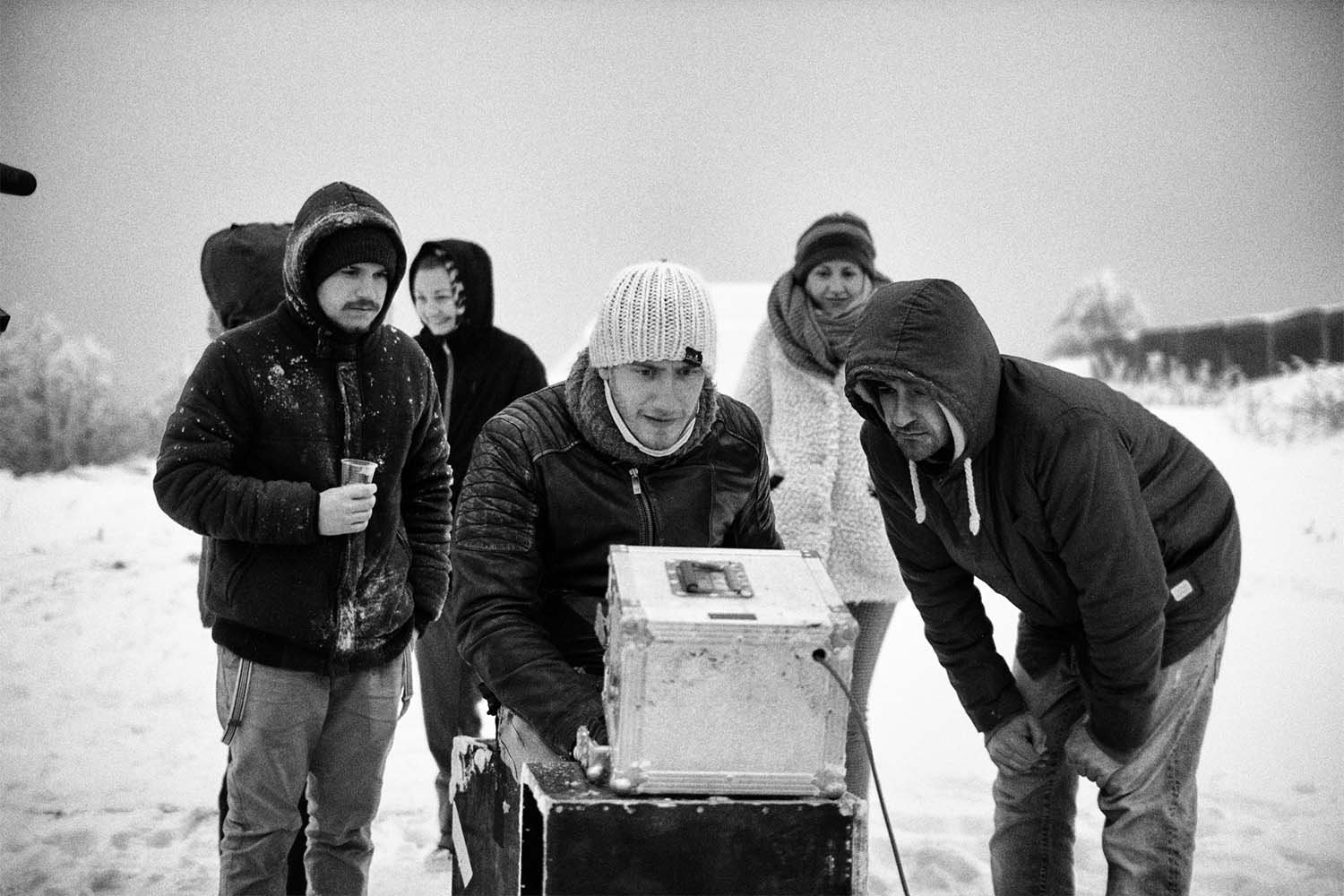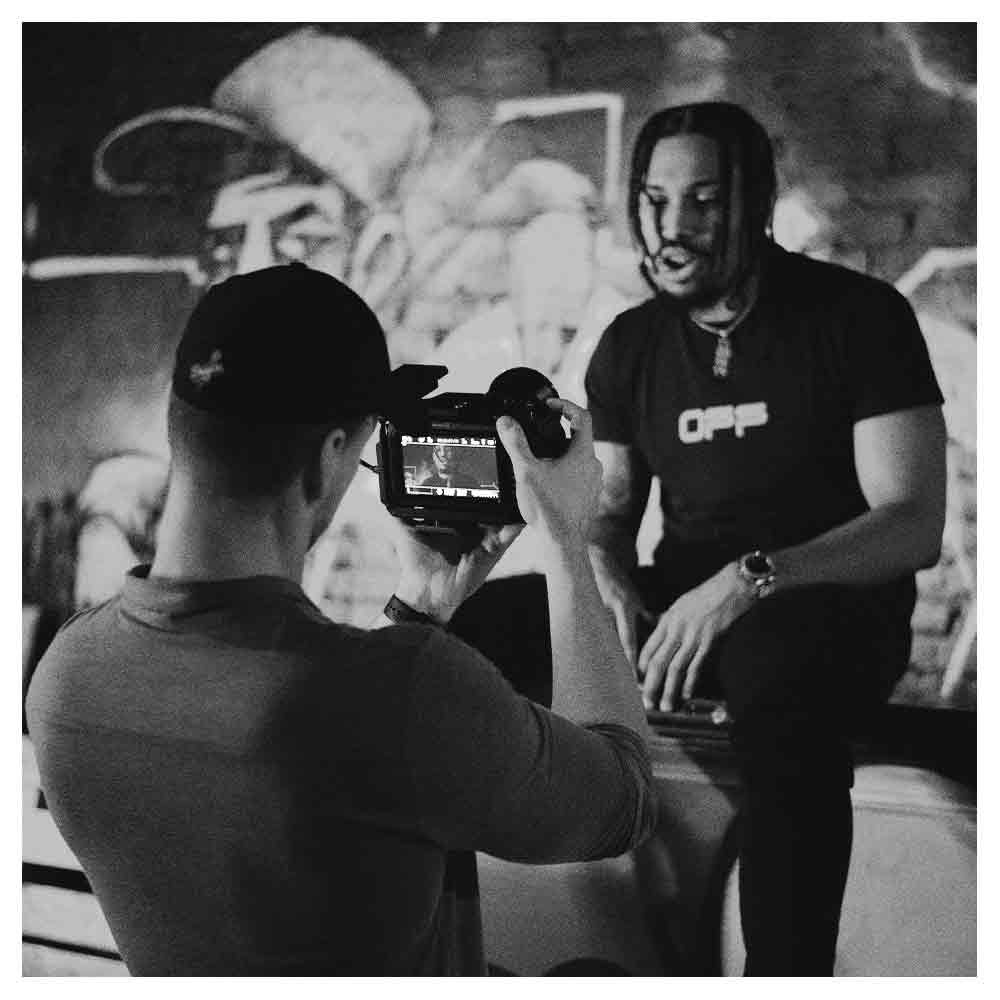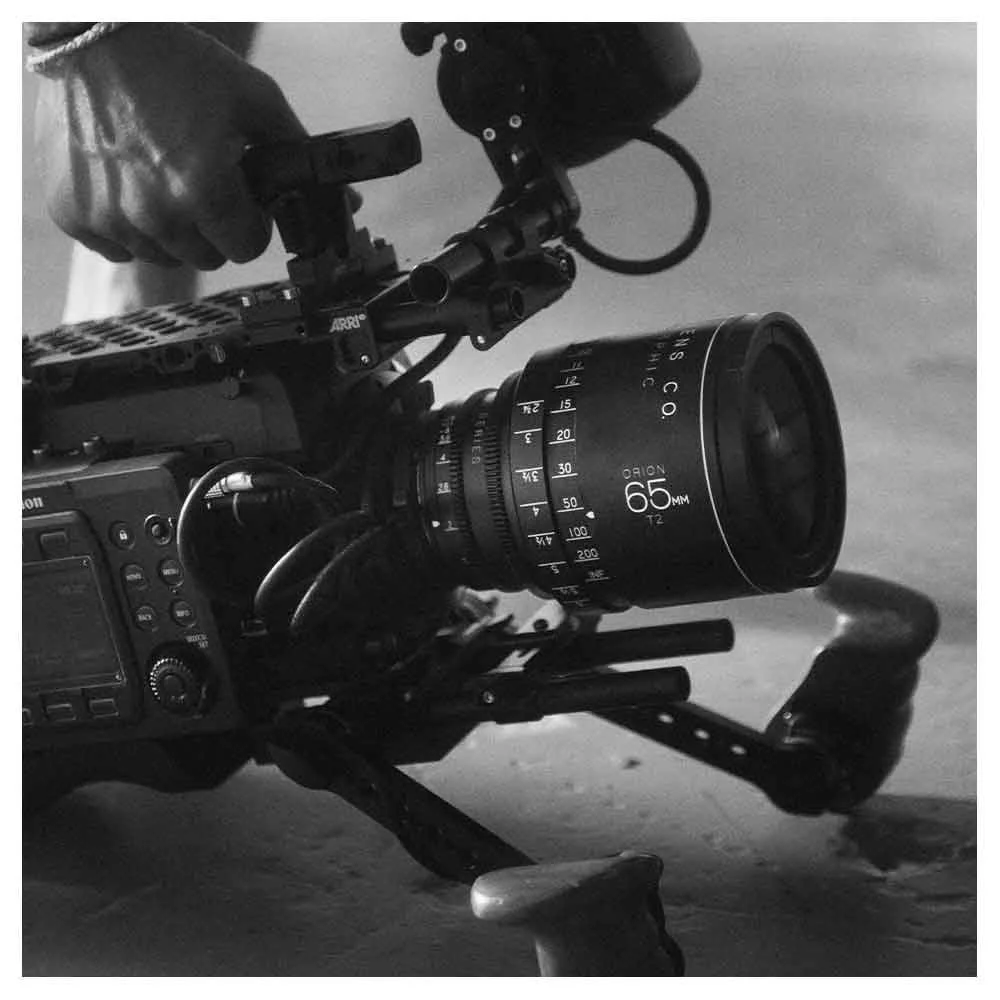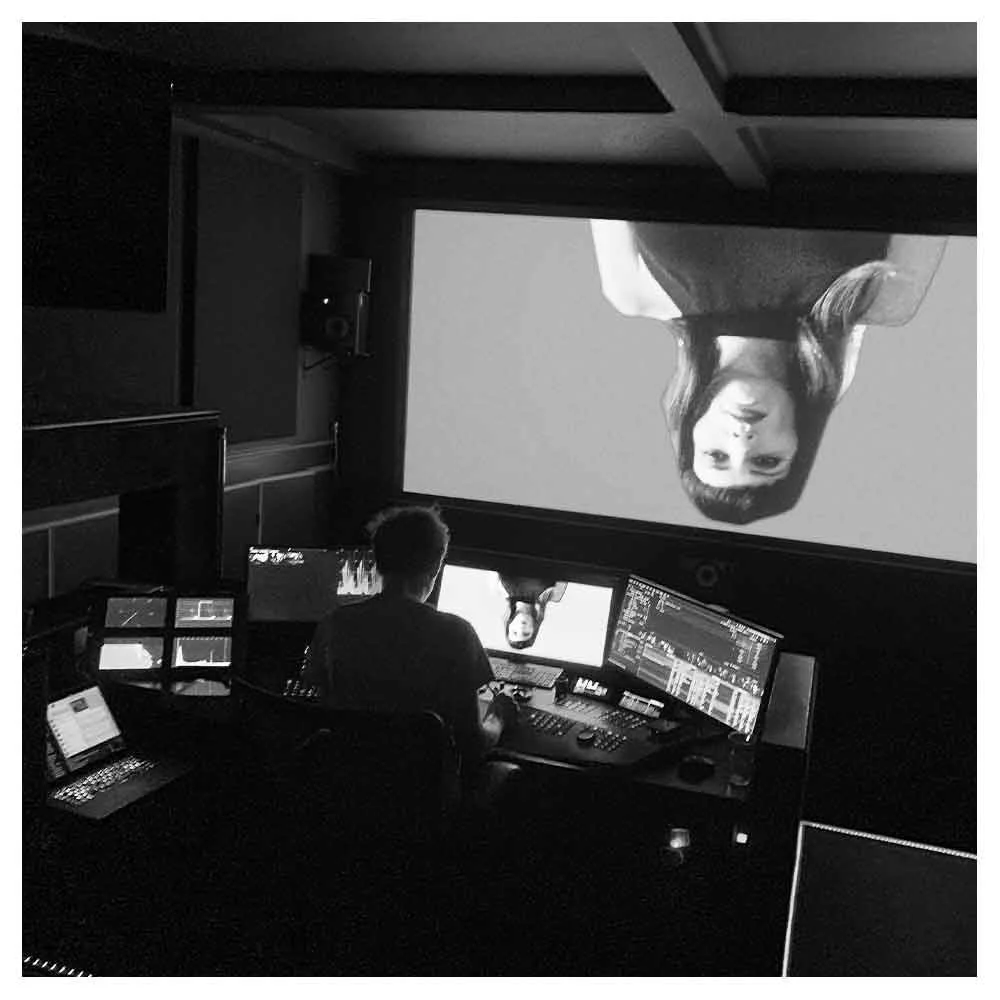How To Become A Music Video Director
Have you ever watched a music video and thought, "I could do that too. I just don't know how to get into the music video world and start directing music videos?!" Then this is the article for you!
In this blog post, I will outline how to become a music video director! I will explain what a music video director is and does, the music video director's responsibilities, and how to get to work as a music video director in the music video industry!
Table of contents:
What is a music video director?
First, before we dive into the details, let's be clear on what a music video director is. In short, music video directors are the visual architects of a music video and are responsible for the project's creative outcome.
To ensure the final product reflects the promised result, the music video director guides a video production team during the pre-production stage, the music video shoot, and the post-production process.
To do that in the best way possible, a music video director needs many different skill sets, like a strong understanding of both the technical aspects of filmmaking and the artistic side of storytelling.
Like film directors, time management skills and working well under pressure are also necessary because directing videos for musical artists often have very tight deadlines.
What does a music video director do?
The best way to describe what a music video director does is by breaking down the music video process into different chapters:
Music Video Directors Pitch Creative Concepts Via music video Treatments.
The first task of a music video director is to develop a concept for the music video.
The director’s concept and creative vision for the project are usually pitched by the music video director to the label using a music video treatment—a digital pitch document packed with flowery language and eye-catching imagery. (More on this aspect of the job in a bit!)
Music labels often send out a music video treatment request by mail to a production company or multiple production companies and ask several music video directors to submit an idea for their upcoming project.
Music Video Directors Direct The music video pre-production Phase.
After the artist and record label choose a music video treatment that best represents their collective vision for the project, the project is awarded to the music video director, and it’s time to start putting all the logistical pieces in place for filming. This phase of the filmmaking process is called pre-production.
Depending on the scope of the project and the available budget, the music video director will work with a producer or video production company to scout locations for filming and hire key personnel. This can include the cinematographer, gaffer, grip, art department, wardrobe, and makeup artists.
The director can create a storyboard, scene breakdown, and shot list in this production phase to help translate their creative vision and ideas to the other crew members.
Music Video Directors Direct the music video shoot On Location.
Once all the props, locations, technical tools, cast, and film crew members are on board, it’s time to film the music video. During the film shoot, the music video director will oversee all aspects of filming, from setting up shots to giving directions to the cast and crew.
The goal is to capture all the individual shots as the music video director envisioned so the editor can cut the concept together as it was sold to the client in the music video treatment.
Music Video Directors Direct The music video post-production Process.
After filming is wrapped, the director will work with a film editor (or cut the project themselves) in post-production to ensure that the final product meets their creative vision.
Depending on the budget and scope of the project, the finished edit can go to a color grader, visual effects artist, and sound designer to add additional VFX (visual effects), SFX (sound effects), and finishing color palette touches to the music video.
How To Become a Music Video Director?
I wish there were one universal answer to the question: “How to become a music video director?” But the truth is, there are many paths aspiring music video directors can take to start directing music videos.
If you ask 20 music video directors how they got there, you'll get 20 different answers.
Follow The traditional path to becoming a music video director.
The traditional way of getting into music video directing is as follows:
Gain film industry experience as a production assistant.
Get a formal education in the media sector.
Get a film school bachelor's degree.
Acquire a network of professional contacts.
Build a strong foundation in the technical aspects of filmmaking and the art of storytelling by doing lots of passion projects, a.k.a. doing lots of totally free or low-paid work.
But, as we live in 2023 with a million new digital options and opportunities, I believe following that traditional path is not necessary anymore to become a music video director. As famous director James Cameron once said:
"Pick up a camera. Shoot something. No matter how small, how cheesy, or whether your friends and your sister star in it. Put your name on it as director. Now you're a director. After that, you're just negotiating your budget and fee."
Acquire good communication skills.
In my opinion, the only real skill you need to acquire to become a music video director is good communication skills so you can communicate your ideas with a client, win the music video treatment pitch, and give your cast and crew directions, so they know what you want and can give you what you need.
And to be a great communicator, you don't need a filmmaking degree or have worked as a production assistant on other music videos. Of course, these can help and will benefit you greatly! But even if you have the most original ideas in the world, if you don’t know how to communicate them, you won’t get the job.
Don't worry about all the fancy filmmaking terms, jargon, industry knowledge, and technical expertise. You can learn those from filmmaking books or online courses. As the director, your job is to give directions and gather specialists around you that can create the results you envision.
If you can confidently translate your artistic vision for a music video, you can become a music video director. No matter your age, gender, religion, ethnicity, or background!
How to get work as a music video director?
Over the years, I’ve noticed that everybody talks about how to light a scene, film beautiful shots with the latest 18K resolution filmmaking tools, and create the craziest effects on the video editing software timeline.
But no one talks about the most crucial aspect of working as a music video director—getting the job as a music video director.
Some believe that if you share your occasional new work with the world via your social media channels, artists and music labels will line themselves up in your mailbox and ask you to direct their latest projects.
Unless the music video goes viral and you win a mentionable award for directing the music video, that will not happen. Let me share a few steps I believe you need to take to get the job as a music video director:
Build a portfolio
The first step in getting a job as a music video director is building a portfolio. That sounds counter-intuitive because how can you build a portfolio if you rely on an artist and music label to award you the music video opportunity?
Luckily, we live in a time when you don’t have to depend on other people to allow you to build a music video portfolio. You can use a stock music platform like Artlist to download an awesome song and a stock footage platform like Artgrid to download amazing shots and start making music videos!
The video at the bottom of this article is an excellent creative process example of what you can do with little resources. And believe me, if done right, most people won’t know the difference between stock footage and original footage.
But, if you would like to get some more directing experience under your belt, you can also start by working on small-budget projects for lesser-known artists or friends before moving to bigger-budget productions. Because the social media following of these artists usually isn’t big, it’s quite easy to get in touch with them via social media.
In this blog article, I’ve outlined 36 tips & tricks for making a low-budget music video that might contain a few helpful nuggets of knowledge gold for you!
Let people know you exist.
With a portfolio on your side, the next step is to let people in the music industry and video production companies know you exist and what you can do for them.
I believe the most effective long-term approach for this is marketing yourself and your services via content marketing. In this blog, I’ve outlined how to do that and get more clients.
To get short-term results, you can reach out to people directly. For music videos, I think there are two ways to do that:
1. Contact a music label.
The first option is to contact a music label directly and let them know you exist and what you can do for them based on your music video portfolio. The best way to find who you need to contact is to search via LinkedIn.
Type in the name of the company in the search bar (for example, Sony Music Entertainment) and then try to find the name of the content manager, creative producer, head of production, senior product manager, or visual consultant from a music label in your region.
Once you've found the right person, use software like Hunter to discover the email structure of the music label's website. For example:
It is even better to be introduced to someone working at the label via someone you know. As I outline in this article, every business transaction essentially boils down to trust, belief, and proof. Getting an introduction somewhere helps to establish trust faster than any other method! (This is why people always hammer down on networking)
2. Contact an artist or manager.
The second option is to try and get in contact with an artist directly or with their management. Depending on the artist's popularity, getting in touch with the artist can be more challenging than getting in touch with someone from the music label.
Social media can be a place to start, depending on the size of their following. Another route to take is via their management. You can use Google to find out who their management is and then use the LinkedIn strategy I outlined above to discover who you need to contact and their email structure.
Learn to Pitch ideas via music video treatments
The third step of getting work as a music video director is the one nobody really talks about: mastering the overlooked art of making pitch-perfect music video treatments.
These are digital pitch documents in which the music video director outlines the video's story, locations, main characters, and vision for bringing the project to life and ensuring everybody is on the same page. A music video treatment aims to instill trust, belief, and proof in the prospect’s mind that you are the right music video director for the job.
In my opinion, this is the most essential step of the entire music video process. If you fail to write music video treatments that sell your ideas and vision for the project, you won't get the job as the music video director.
The downside of the music video genre is that more music video directors than jobs are available. Therefore, it’s highly competitive. Music labels will ask many music video directors to pitch their ideas via music video treatments so they can choose the concept that best represents their collaborative vision for the project.
If you want to know more about how to write treatments that will help you land the project, I wrote a very detailed blog article about this aspect of the job that you can read here.
Conclusion
If you're interested in becoming a music video director, there's no better time to start than now. With the rise of streaming services and social media, there is more demand than ever for fresh, new content.
While it may seem like a daunting task at first, if you follow these tips and put in the hard work, you'll be directing music videos in no time!

































